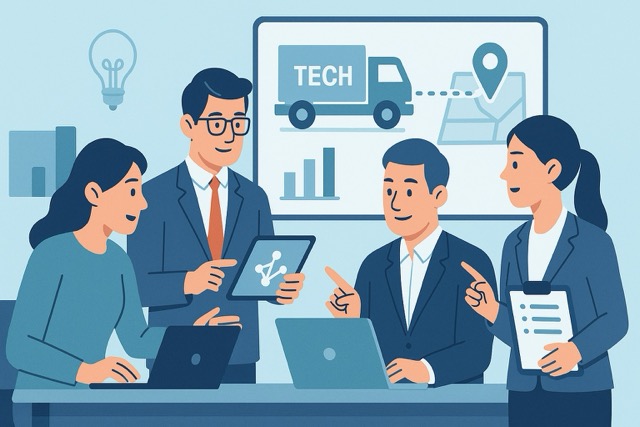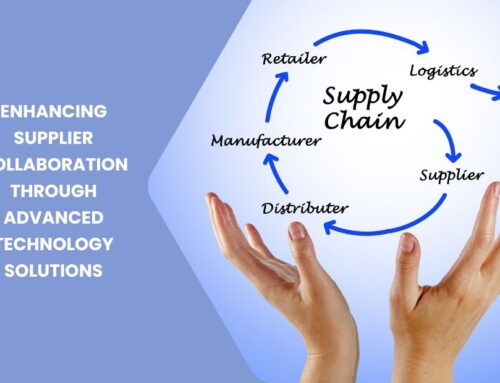You’ve likely noticed the flood of acquisitions happening across the logistics tech space—and it’s no coincidence. Large logistics firms are snapping up agile, tech-driven startups to stay competitive in a rapidly digitizing supply chain environment. This isn’t just about acquiring talent or innovation; it’s about reshaping how logistics operates. Whether you manage operations, tech partnerships, or investment strategy, understanding the motivations behind these mergers and acquisitions (M&A) can help you better position your company in an increasingly competitive market. This article breaks down the key reasons behind the M&A boom and what it means for your strategy going forward.
Tech Gaps and Innovation Pressure
As a logistics leader, you know how hard it is to modernize legacy systems while maintaining operational continuity. That’s why major players like Maersk, FedEx, and UPS are bypassing internal R&D by acquiring tech startups. These startups bring ready-built solutions—AI-powered route optimization, predictive analytics for inventory, or API-first freight marketplaces—that you can plug into your existing network with less friction than building from scratch.
You’re not just acquiring code. You’re accelerating transformation. Many of these startups have spent years refining niche platforms—often cloud-native and mobile-friendly—that address exactly the digital shortfalls large firms face. By acquiring these companies, you’re solving pain points and bringing in teams trained to think in agile sprints, not 18-month deployment cycles.
Speed to Market and Strategic Scaling
Traditional logistics companies operate on longer timelines, but the digital economy rewards speed. When a startup has already validated a technology in one region or vertical, you can scale it across your global footprint quickly. This advantage gives you the ability to meet new customer demands or regulatory shifts faster than if you tried to build internally.
This “buy, not build” strategy also lets you experiment. By integrating a startup’s solution into a limited region or service line, you can test effectiveness without exposing your entire operation. If it works, you scale it. If it doesn’t, the loss is minimal compared to a failed enterprise-wide software rollout. You gain flexibility while maintaining your core strengths.
Expanding Market Reach and Service Lines
In today’s fragmented logistics landscape, having great tech isn’t enough—you also need reach. That’s where strategic acquisitions come in. You might be dominant in freight forwarding but lacking in last-mile. Or maybe your visibility platform stops at the warehouse door. Startups specializing in hyperlocal delivery, warehouse robotics, or customs tech offer you a way to bridge those gaps instantly.
By acquiring companies that serve adjacent segments, you’re building a more connected value chain. You can now offer bundled solutions to clients—like end-to-end tracking, faster fulfillment, or real-time customs clearance—without forcing them to manage multiple vendors. That convenience builds loyalty, just as your competitors are trying to poach your best accounts.
Talent and Culture as Competitive Assets
Startups aren’t just about their products. They’re also about their people. When you acquire a promising logistics tech startup, you often inherit a lean, agile team that’s already proven it can build and iterate quickly under pressure. These teams often bring practices your internal teams haven’t adopted yet—design thinking, continuous deployment, or user-centered UX workflows.
Bringing in this culture of innovation can inject new life into departments stuck in bureaucratic gridlock. If you integrate carefully, the culture shift can cascade throughout your organization. Many successful M&A integrations start by giving acquired teams autonomy and visibility, then allowing their practices to influence legacy operations over time.
Private Equity and Venture Capital Heat
You’re not alone in chasing innovation. Private equity and venture capital firms are doubling down on logistics tech, and that’s driving up valuations. As these investors funnel capital into promising startups, you’ll find yourself competing for acquisition targets in bidding wars that would’ve been unthinkable five years ago.
This activity is reshaping the market. You’re seeing more mature startups staying independent longer, thanks to larger late-stage rounds. But you’re also seeing more startups built to be acquired—designing their architecture, metrics, and compliance around what larger acquirers need. When M&A becomes the endgame, you’re able to find acquisition-ready startups that fit your infrastructure with minimal refactoring.
Sustainability and ESG as Deal Drivers
Sustainability isn’t just a buzzword anymore—it’s a procurement requirement, an investor metric, and a customer demand. That’s why you’re seeing big firms acquire startups that help decarbonize supply chains. Whether it’s an electric vehicle fleet optimization platform or a startup that automates carbon reporting, these companies give you the tools to meet sustainability goals faster.
Startups are often better positioned to innovate in sustainability because they start without legacy emissions or outdated infrastructure. When you acquire these firms, you’re not just improving your ESG metrics—you’re also gaining credibility with clients, regulators, and investors who are watching your sustainability performance closely.
Risks, Red Flags, and What to Watch
Not every deal is a home run. Integration risk remains high, especially when there’s a clash between startup pace and corporate structure. If you rush the integration, you may lose key talent, stall product development, or disrupt your own systems. Cultural alignment is just as critical as tech alignment.
You also have to assess the financial viability of the startup’s model. Some tech companies have flashy demos but lack recurring revenue or a clear path to profitability. Always dig into usage metrics, customer retention, and platform scalability before closing a deal.
Finally, watch for antitrust scrutiny—especially if you’re consolidating market share in sensitive logistics segments. Regulatory bodies in the U.S. and EU are paying closer attention to mergers that affect pricing transparency, carrier access, or market fairness.
Why Are Logistics Giants Buying Startups?
- Access to ready-built tech solutions
- Expansion into new markets and service lines
- Speed to innovation and deployment
- Acquisition of talent and startup culture
- ESG goals via green logistics startups
In Conclusion
If you’re leading logistics strategy today, waiting for organic growth just isn’t enough. Big players are buying startups because the stakes are high, the tech moves fast, and disruption favors the bold. Whether you’re modernizing warehouse operations, integrating AI into last-mile routing, or decarbonizing your freight network, the easiest path forward might already exist—built by a startup ready for acquisition. You just have to spot it before your competitor does. M&A isn’t just about ownership anymore. It’s how you future-proof your supply chain.










